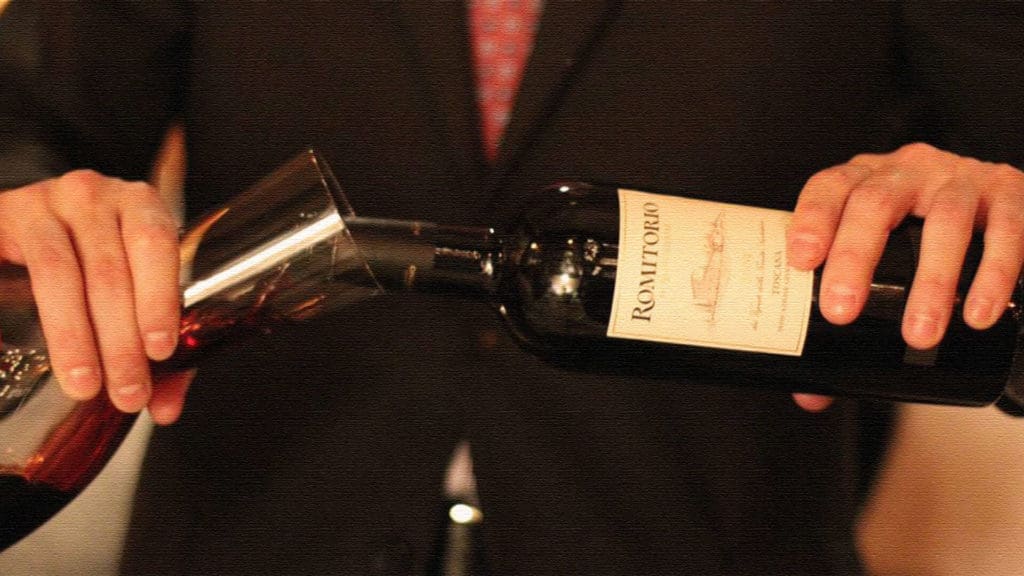
So many people in the marketplace are attempting to make a sale by talking about their product attributes. Unfortunately, the key to selling your wine or spirit brand is not about the product when it comes to restaurants. The unfortunate truth is, with few exceptions, that your product is not so distinct that a restaurant must carry it. It’s really more about service, dependability and trust..
PRO TIP #1: Understand the unique challenges that restaurants face.
Restaurants have challenges that off premise accounts do not. If you can understand these difficulties, you’re going to be a lot more successful. To get you started, here are a few of the most important ones.
Odd Hours and Valuable Time
Restaurant workers are very busy. Period. You have to place a very high premium on the buyer’s time. Do not show up during busy service times (lunch or dinner). It doesn’t really matter when it’s convenient for you; you have to tailor your approach to when it’s convenient for them.
In restaurants, people work very odd hours. You have to be in tune with how time-crunched these people are. Package stores and grocery stores don’t have the same environment. They don’t have a lunch/dinner rush, or a line out the door, or people running around trying to serve customers live. Don’t get me wrong, there is a certain level of service in package and grocery stores, but it’s a unique service level in a restaurant.
Limited Storage
Another big challenge for restaurants is they have minimal storage space. Most restaurants will have one or two deliveries a week because they just don’t have enough storage to stock a week’s worth of goods. This will present special challenges to them, and you as the seller of goods need to understand that and factor that into your approach with them.
Wearers of Many Hats
Do you know those people who make decisions at restaurants? That is not their primary job. Most of those people are busy creating the schedule for the servers and bartenders. They’re busy doing inventory or receiving the wine and liquor order for the week. This is all in contrast with off-premise retailers, where buying and selling is the role, and that’s pretty much what they do. But for restaurateurs, the buying of wine or spirits is just one small part of a wide array of jobs that they have to do.
Three Priorities for Restaurants
There are three things that are important to all restaurants, and you must learn and appreciate what these three things are and how you might use them to enhance what you have to offer.
First, they want to grow revenue. The restaurant business is a very low-margin business, and more revenue takes care of many things. They’ve got certain fixed costs that have to be covered. Once those are covered, everything else contributes towards profits. So maximizing revenue is a big, important thing. Be thinking about how your product can help them do that.
The second thing is controlling costs. Contrary to what people think, it’s not always about lowering costs; it’s about controlling costs. Restaurants plan their expenses very carefully into their menu prices and what they can’t tolerate is any kind of variance. Assure that you’re sensitive to that.
Lastly, restaurants want guest satisfaction. They want to please and delight their guests. Here’s an area where selling wine and spirits can help because, hopefully, you’re bringing them products that will please and surprise their guests. If you’d like a more in-depth look at these three priorities, click this link to watch a Youtube video I did about it.
PRO TIP #2: Tailor your selling approach to the unique needs of a restaurant.
If you’ve taken the time to understand their needs, you’re now ready to tailor your approach to those unique needs.
Be a Business Partner
Don’t act like a salesperson. You’ve probably heard this before, but it stands doubly true in the restaurant industry. The more you act like a salesperson, the less you’re going to sell. Nobody likes to be approached in a traditional salesperson manner. You know the drill: “Here are my products I’m going to sell you today. I’m going to pitch and talk about my product until you buy.” This is just a horrible tactic.
You need to approach it more as a business partner. Prioritizing their needs over yours is one of the single most significant things you can do to be successful in a restaurant, which means you’re going to have to do your homework. You’re going to have to really understand what that particular restaurant is facing. Is their business doing well? If so, why? What is and isn’t working? You can do many things to investigate before you approach any of the buyers in a particular restaurant.
Narrow Your Focus
Another way to tailor your sales approach is to keep your focus very narrow. This is going to help you respect people’s time. Don’t bring in twelve different things and spread them out on the table, and have them taste through them. This shows an incredible lack of respect for people’s time. It also puts a lot of work on their shoulders to sort through all the offerings you’ve brought.
If you’ve done your homework and know what you want to focus on, keep that focus very narrow. Today won’t be the only opportunity you’re going to have to present to these people, but it really will help a lot if you keep your focus to just two or three things max that you want to talk about that day.
PRO TIP #3: Add real value to the business relationship.
This is another way to tailor your sales approach, but it’s so important that it deserves its own section. If your focus is on adding value to the business relationship, you’re going to sell more products than you ever thought possible. I know it’s a subtle twist in the mindset, but it is powerful, and it may take some practice if you’ve never received proper training on how to sell to a restaurant.
So how do you add value to the business relationship in a restaurant? One thing you can do is help them stay up to speed with trends. If you have ever worked in a restaurant, you know that they don’t have time for anything. They don’t have time to research and read the daily trade press and keep up with what’s going on. So, if you spend some time reading the trade press, you can be a significant asset to them. Clip articles or summarize the week’s news about what’s trending in wine and spirits. Compile it into a single sheet of paper that you could leave behind.
This doesn’t have to be just trends for the business in general, but trends in their neighborhood or area. What are other people doing that’s working? Restaurants are very interested in what other people are doing; they just don’t have time to investigate. You can be the person to provide that for them.
Dependability is Key
The biggest way to add value is just to be dependable and accessible. It’s shocking how many salespeople can’t be found when they’re needed. And because restaurants have very little time, they’re only going to call the people they know they can reach, who will call back right away, who will have answers to their questions. If you strive to be that person — the go-to person — then you’re going to sell a lot of wine. Because really, selling wine to restaurants is more about service, dependability, and trust than it is about your product knowledge or what items you have in your portfolio.
When I was selling to restaurants on the street, I wanted to be the person they called first for any kind of question they had any time. Call me, and if I don’t answer, I’ll call you right back, and we’ll get you the information you need. This will help enormously with shifting your approach and adding value to the business relationship.
Be Aware of Your Inventory/Deliver at the Quoted Price
These two points go hand in hand. One, don’t run out of stock. Once you’ve sold a product (if you’re a supplier), you need to check with the distributor on their inventory. If you are the distributor rep, you’re obviously going to have better access to what’s in your inventory, but you still need to watch it like a hawk. As I mentioned in Pro Tip #1, restaurants don’t have a lot of storage, so they’re going to need to order frequently. And so neither party, the buyer nor the seller, can merely assume that the products will be available. You must watch it like a hawk.
Running out of stock will be very damaging. When a restaurant starts having success with something, they like to keep it going. Running out of stock on one of your products is equivalent to sending their customer across the street. Now, it’s doubtful that the restaurant across the street has the exact same product that you just ran out of stock, but that’s the mentality you must have. That’s how hurtful it is to a restaurant when you let them run out of stock. You’re asking their customers to leave the restaurant and go to their competitors.
The second part to this point is delivering the product at the quoted price. So many people think that you need to lower the price to make the sale. I have a video about this called “Lowering Price is for Cowards.” You should definitely check that out because if you’re providing good service, good value, and you’re offering a fair price, then there’s no need to lower the price to make the sale. But once you quote a price, you need to make darn sure that it gets delivered at that price, not a penny more, not a penny less. It is a sign of professionalism, but it will take follow-up on your part.
Be a Customer
The last thing, which should go without saying, is to be a customer of that restaurant. When you have an opportunity to dine or entertain, whether it’s personal or business, go to that restaurant — especially before and after making a sale. There’s no better way to show a restaurant that you care about their business than to become a customer yourself.
Just remember, selling to restaurants is not about the product; it’s about service, dependability, and trust.
If you’d like to learn more, check out our NEW group coaching program where we teach wineries and craft distilleries how to master 13 strategies like selling to restaurants, and more. Visit Wine Sales Stimulator for more information!




